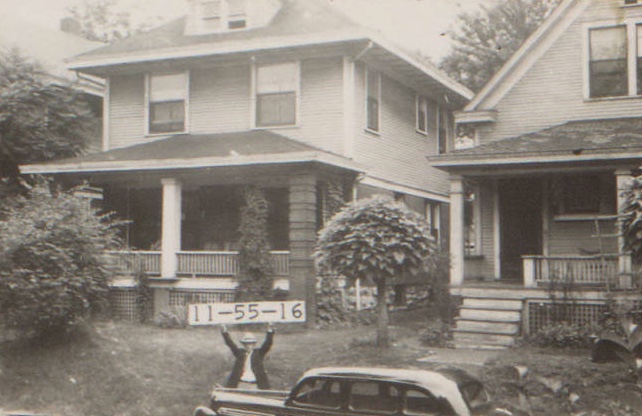
Waverly Way – once a street lined with residences and apartment buildings in a thriving Midtown – has now disappeared. Even its name is gone. The street is now called W. 34th Terrace, sandwiched in between the vacant MGE Building at 34th and Broadway and the Metropolitan Community College Health Sciences Institute just to the south. Where the houses seen in the newspaper ad above stood are now large commercial buildings surrounded by parking lots.
As part of our Uncovering History Project, the Midtown KC Post is examining each block in Midtown. A set of 1940 tax assessment photos is available for many blocks.
Today, Waverly Way (W. 34th Street) from Broadway to Pennsylvania.

The house on the corner of Waverly Way and Pennsylvania as it appeared in 1940.

New housing development offers up “moderately priced homes”

Some Midtown blocks were built for the wealthy, and some were made for the working classes. Waverly Way was created for the middle class, offering “moderately priced homes,” according to one developer. In 1905, J.C. Hamrick, Jr. advertised a row of six homes along the north side of Waverly Way, promising “high class ideas and workmanship” and a choice location. Each had six to eight rooms, double polished oak floors, exposed nickel plumbing, and a granitoid basement.
By 1910, census records show several families living along Waverly Way, although the majority of them rented rather than owned their homes. There was a saloon keeper, M.G. McCarthy, born in Ireland, who lived at 408 with his wife Mary (whose parents were born in Ireland), brother-in-law Charles Sweeney, a mail carrier, three daughters, and four sons. William Dunbar and his wife Katherine, each one with an Irish-born parent, lived at 420. Dunbar was a railroad machinist. Mill engineer Charles Butler and his wife, Elizabeth, rented one of Hamrick’s homes at 432 Waverly Way.
Ten years later, in 1920, Bulter now owned his home, as did many of his neighbors. Next door at 430 was Tailor Phillip Gerhardt, 48, wife Elizabeth, two daughters, and father-in-law August Spies. All had been born in Germany. Dentist Herman R. Francke (or Franke), 46, wife Nellie, a son, two daughters, and a nephew owned the home at 432. At 438, Widow Anna Turgeon, 62, lived with three sons and two daughters. Anna’s parents were Irish and English.
And Butler was still there in 1930. The family had taken in a boarder, Dorothy Bakewell, a biscuit company packer. Anna Turgeon was still there as well, living with a son and two daughters, as well as a lodger, Helen Clemens, a clothing store stenographer. Mary Leifhelm, a widow, had moved in at 440 when her husband, city custodian Herman, was still alive. She shared the home with two daughters, a granddaughter, two grandsons and a sister-in-law.
The photos below show the houses on the block as they looked in 1940.



















The homes along Waverly Way were still standing when those 1940 photos were taken, but the area’s character had been changing. Gradually, Broadway was being transformed from a residential street, home to very wealthy Kansas Citians, to a major commercial corridor. Over the years, those commercial operations gradually replaced many of the homes, including those on Waverly Way, with parking lots to serve their employees.

A recent Google Map photo of the former Wavily Way, now W. 34th Street. The homes that once lined the street have been replaced by parking lots.
Historic photos courtesy Kansas City Public Library/Missouri Valley Special Collections.
Pingback: Uncovering History: Have Much of Midtown Has Been Uncovered? | Midtown KC Post